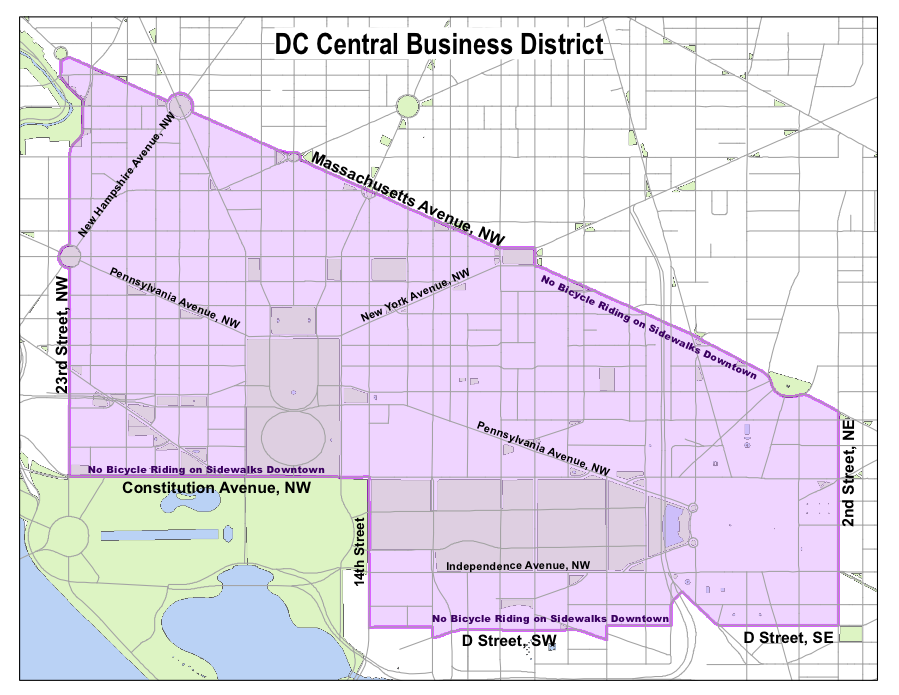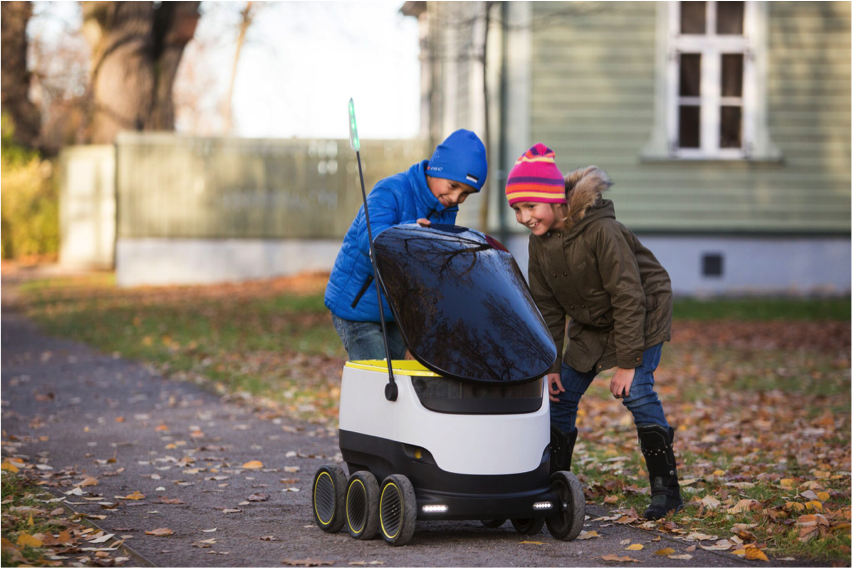October 26, 2016
By the end of this year, Washington, D.C. will be the inaugural testbed for a new type of delivery service: last-mile ground deliveries, performed by robots, for the low cost of $1.
Starship Technologies, a European company, is working with the D.C. City Council to establish a first-of-its-kind pilot program that will allow the company’s robots to conduct package, grocery, and food deliveries within city limits.
The company’s robots are a couple of feet tall and take up the same amount of space on the sidewalk as a pedestrian. Weighing in at 30-35 pounds, the inexpensive robots are equipped with nine cameras, two-way audio capabilities, and a lockbox for its cargo.
“They’re social robots,” explains Henry Harris-Burland, Starship’s marketing and communications manager. “The robot acts like a pedestrian and it knows it’s at the bottom of the food chain.”
District of Columbia
The nation’s capital is particularly well suited for the first major deployment of these robots in the United States. Starship was attracted to the city’s low to medium density development, walkable (or, in this case, drivable) sidewalks, low-rise buildings and enthusiastic city officials.
This is in stark contrast with New York City, where the robot “might not be best suited for environments like Times Square,” says Harris-Burland.
The Personal Delivery Act of 2016 (B21-0673), passed by D.C. City Council this June, allows Starship Technologies to launch a two-year pilot project for their delivery service. Councilwoman Mary Cheh, who has historically been a proponent of transportation innovations and tech initiatives such as Car2Go, MyTaxi, Hailo, and Uber, introduced the legislation.
The Personal Delivery Act allows for the operation of Starship Technologies’ robots, defined as “personal delivery devices,” to operate within D.C.’s central business district (CBD) on sidewalks and crosswalks, provided they:
- Are operated in a “safe and nonhazardous manner” to avoid endangering people or property;
- Observe a maximum speed of 10 miles per hour (currently the company has a self-enforced speed restriction of 4 miles per hour);
- Weigh less than 50 pounds prior to being loaded with cargo;
- Avoid interfering with pedestrian or bicycle traffic;
- Yield the right-of-way to all vehicles approaching when entering a crosswalk, except when crosswalk pedestrian signs are illuminated;
- Maintain a malfunction alert system that either (a) allows the remote operator to take control of the device or (b) causes the robot to safely pull over; and
- Obey all traffic and pedestrian signals and signs.
Another advantage to testing in D.C., in addition to its low-density development, is that cyclists are banned from riding on sidewalks within its perimeter.

Deployment
In the coming weeks, Starship Technologies will announce one partner each in the fields of package, grocery, and food deliveries in Washington. Within 4-6 weeks, Harris-Burland says, the robots will begin to conduct deliveries in a designated section of the city.
 While these delivery robots initially come across as a utopian novelty, Harris-Burland is bullish on their prospects. The company is already conducting deliveries in Europe and has a presence in 56 cities and 16 countries. And now, he says, city leaders across the United States are approaching Starship on their own volition. A common trend among partner cities appears to be a dedication to reducing congestion and pollution, with the shared vision of creating greener, smarter cities.
While these delivery robots initially come across as a utopian novelty, Harris-Burland is bullish on their prospects. The company is already conducting deliveries in Europe and has a presence in 56 cities and 16 countries. And now, he says, city leaders across the United States are approaching Starship on their own volition. A common trend among partner cities appears to be a dedication to reducing congestion and pollution, with the shared vision of creating greener, smarter cities.
The public seems to share a similar acceptance of – or enthusiasm for – this technology. Through 10,000 miles of driving and interactions with 1.7 million people, 60-70% of people did not pay much attention to the robots, says Harris-Burland. The rest of the population, he laughs, react overwhelmingly positively.
A Robot on Every Sidewalk
Beyond the District of Columbia, Starship Technologies is evaluating other U.S. cities for testing and deployment of its delivery robots. The combination of model legislation through the Personal Delivery Act of 2016 and experience in implementing their technology in Washington will aid in this expansion into new markets – as well as the absence of a clear rival.
In September, Mercedes-Benz and Starship Technologies unveiled a partnership to develop Robovan: specially designed vans that act as motherships for up to 8 of Starship’s delivery robots. 4
The vans could extend the reach of the robots and, according to a press release, can allow 400 packages to be delivered in a 9 hour shift. While Starship does not have plans to incorporate Robovan in its DC operations, Harris-Burland indicated that Starship is “likely to start testing it in a city in Germany shortly.”
And the company’s partnership with the McMillon Innovation Lab at the University of Arkansas, just 30 minutes south of Wal-Mart headquarters, may provide a pathway for rapid growth.
Following the partnership announcement, Matt Waller, interim dean of the Sam M. Walton College of Business at UA, told Kim Souza of Talk Business, “Doug McMillon, CEO of Wal-Mart Stores, told us when he contributed the $1 million to fund it, that he wanted this lab to explore future technologies that help to bridge the physical and digital retail worlds.”
While a future of robots delivering shampoo and toothpaste from Wal-Mart remains a matter of speculation, it is evident that Starship Technologies is evaluating a number of options for future expansion.
But Starship Technologies’ ambitions extend well beyond delivering Thai take-out, packages, and (ostensibly) Wal-Mart deliveries. The company’s undertones of greener, smarter cities also pave the way for equity initiatives in the future.
“We have the potential to serve food deserts,” says Harris-Burland, referring to often-impoverished urban areas where it is difficult to buy affordable or good-quality fresh food.
Given Washington’s wealth disparity and wide swath of food deserts in the eastern portion of the city and its suburbs, this would undoubtedly be a welcome relief.



 While these delivery robots initially come across as a utopian novelty, Harris-Burland is bullish on their prospects. The company is already conducting deliveries in Europe and has a presence in 56 cities and 16 countries. And now, he says, city leaders across the United States are approaching Starship on their own volition. A common trend among partner cities appears to be a dedication to reducing congestion and pollution, with the shared vision of creating greener, smarter cities.
While these delivery robots initially come across as a utopian novelty, Harris-Burland is bullish on their prospects. The company is already conducting deliveries in Europe and has a presence in 56 cities and 16 countries. And now, he says, city leaders across the United States are approaching Starship on their own volition. A common trend among partner cities appears to be a dedication to reducing congestion and pollution, with the shared vision of creating greener, smarter cities.

